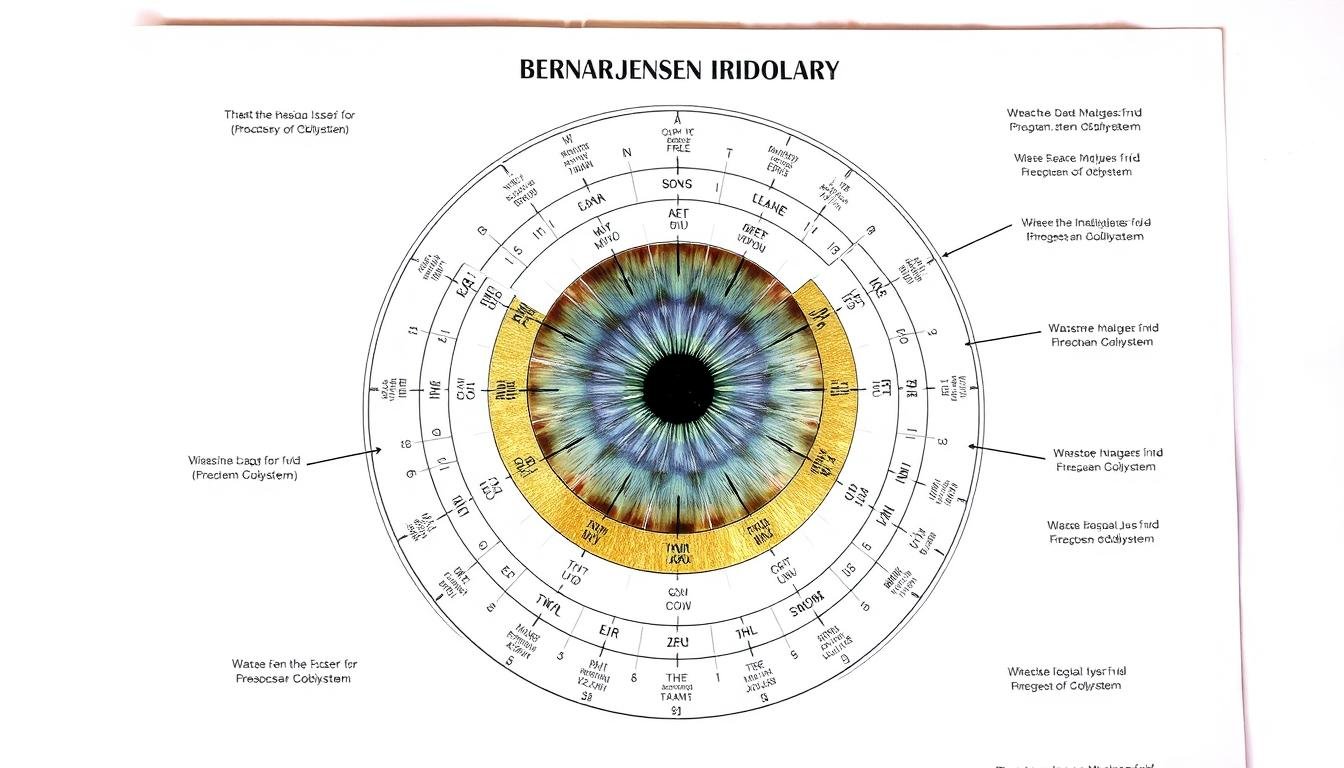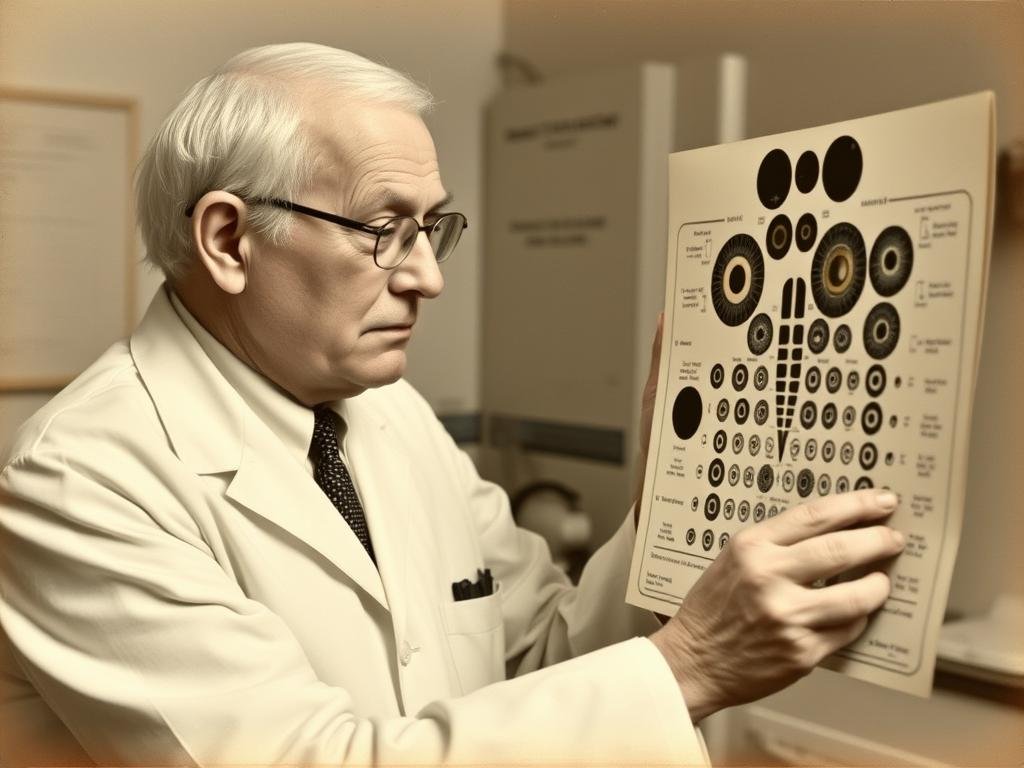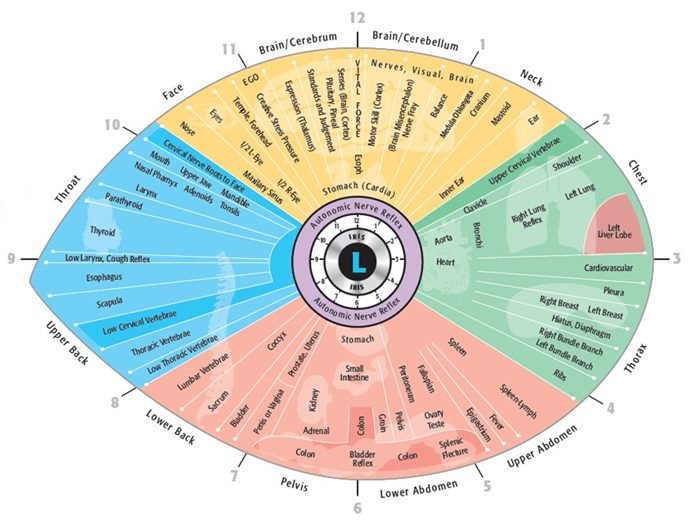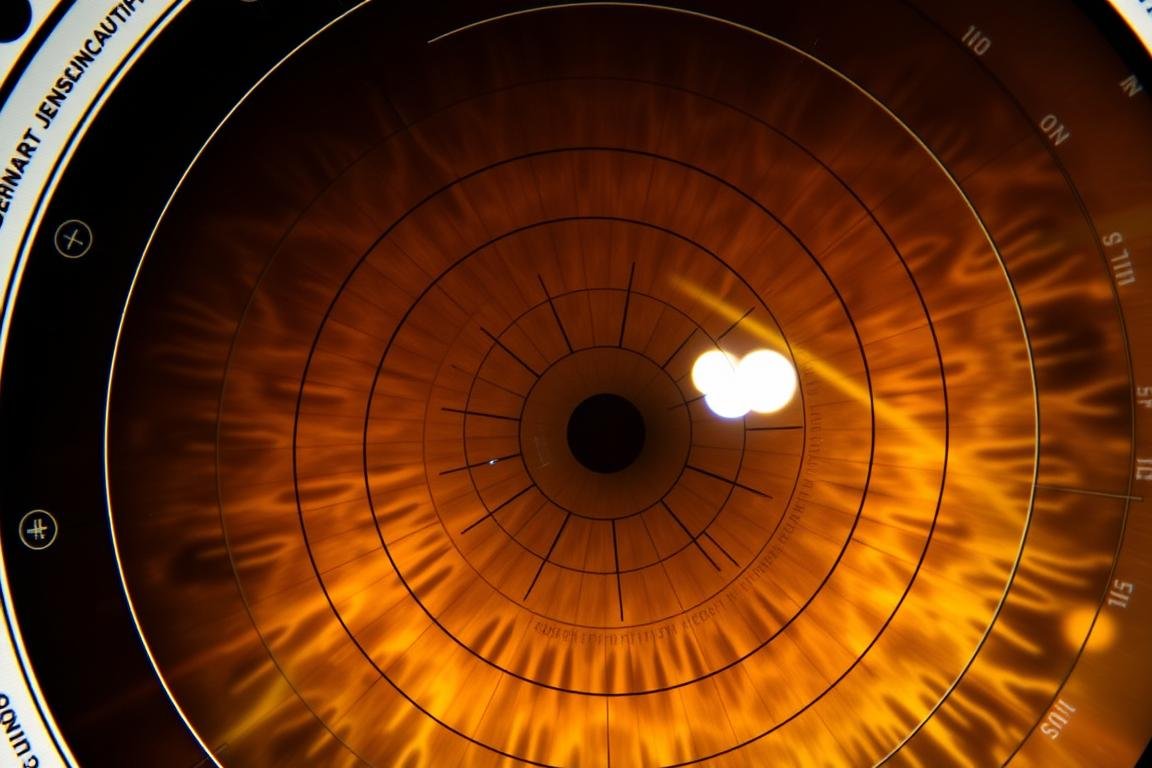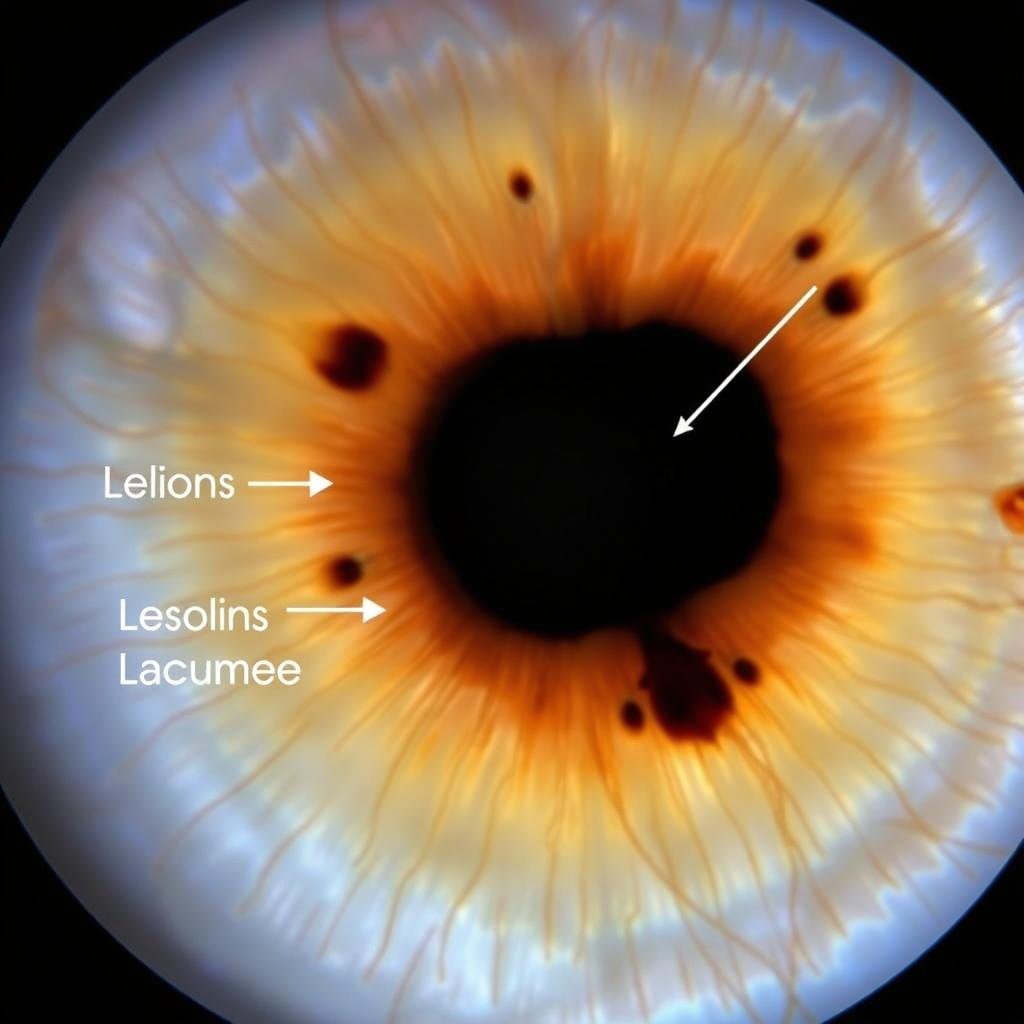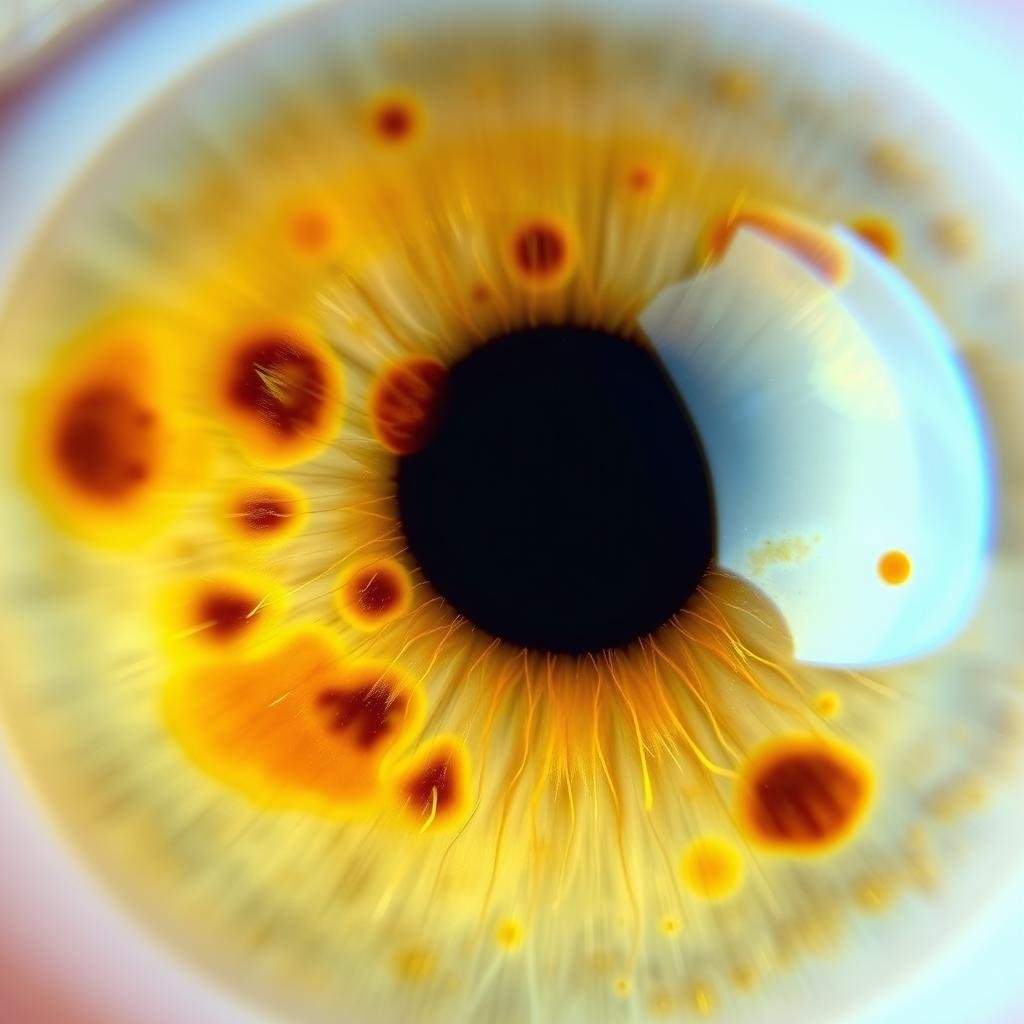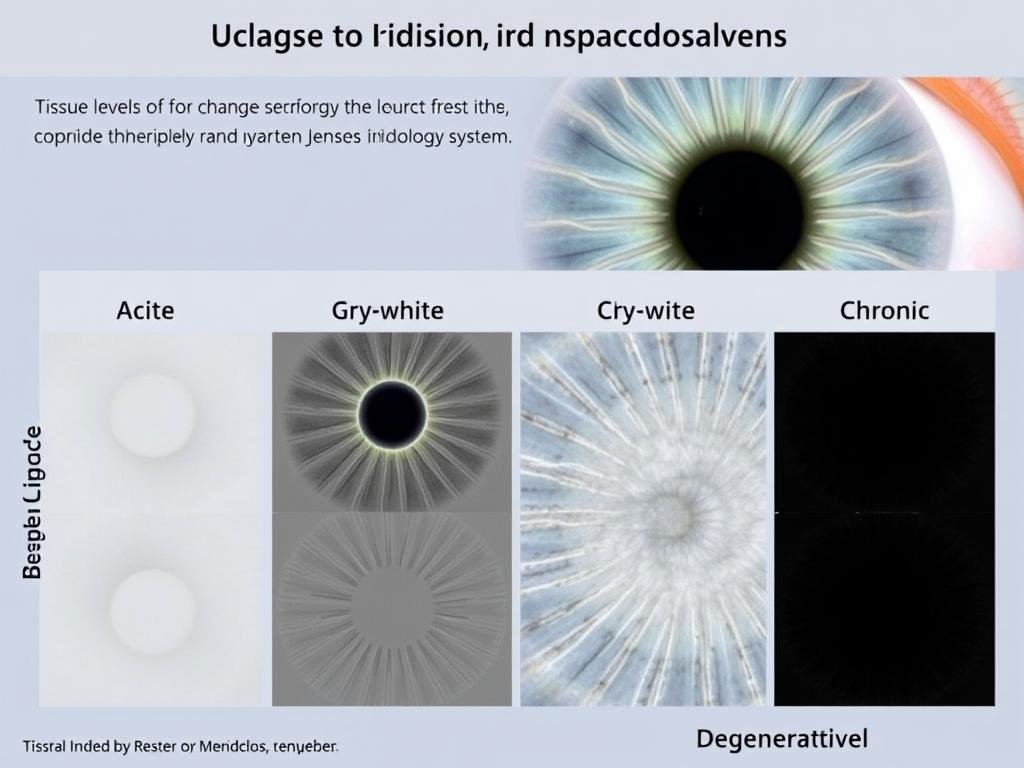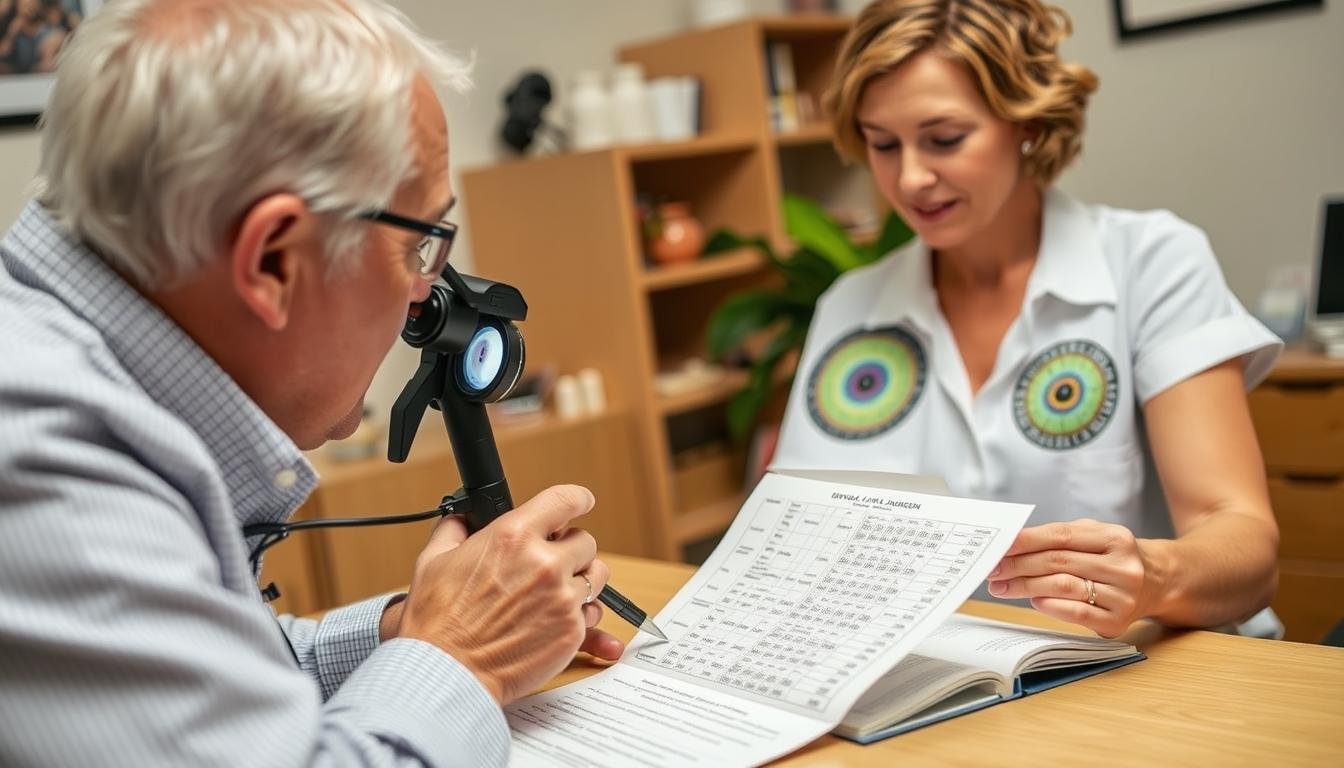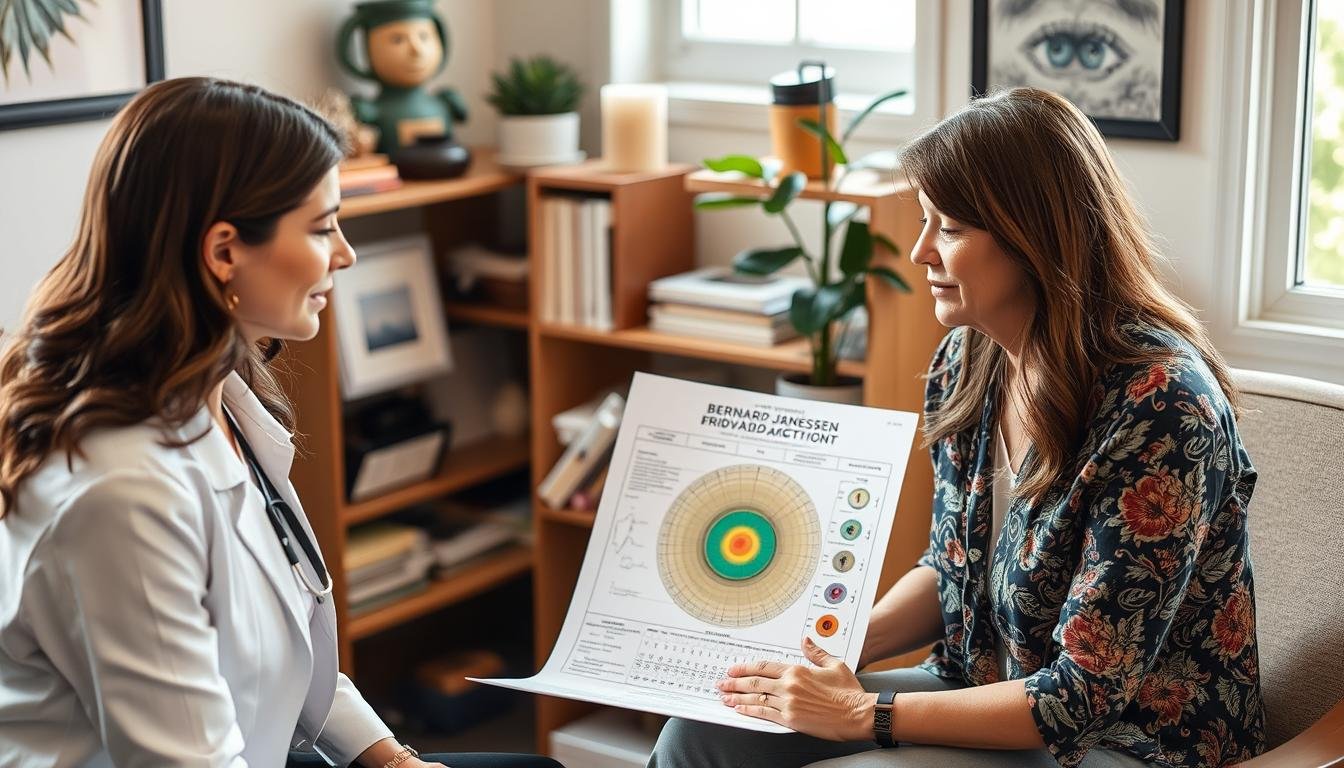bernard jensen iridology chart-Iridology, the study of iris patterns and their correlation to health conditions, has been practiced for centuries. Among the pioneers in this field, Dr. Bernard Jensen stands out for his significant contributions to modern iridology. His detailed iris charts have become fundamental tools for practitioners worldwide who use them to assess health conditions through iris examination. This comprehensive guide explores Jensen’s revolutionary approach to iridology, breaking down his chart’s structure, and explaining how to interpret iris markings according to his methodology.

Dr. Bernard Jensen’s Legacy in Iridology
Bernard Jensen (1908-2001) was an American chiropractor who dedicated over 50 years to researching and developing iridology as a diagnostic tool. In the 1950s, Jensen began teaching his methods across the United States, significantly advancing the field’s popularity and credibility within alternative medicine circles.
Jensen’s approach was unique because he combined traditional European iridology concepts with his clinical observations from thousands of patients. His work culminated in the creation of detailed iris charts that mapped specific areas of the iris to corresponding body organs and systems.
Unlike earlier practitioners, Jensen emphasized the importance of toxin exposure in health assessment and advocated for natural foods as detoxifiers. His holistic approach connected iris analysis with nutrition, making his methodology particularly appealing to those interested in natural health practices.

Jensen authored numerous books on iridology, including “Die Wissenschaft und Praxis der Iridologie” Und “Iridology Simplified,” which remain influential texts in the field today. His dedication to documenting iris-tissue changes and correlating them with health conditions created a systematic approach that practitioners still follow.
Structure and Zones of the Bernard Jensen Iridology Chart
Der Bernard Jensen iridology chart divides the iris into approximately 80-90 zones through a 360-degree mapping system. Each zone corresponds to specific organs, glands, or body systems. Understanding this structure is essential for accurate iris interpretation.
The 360-Degree Mapping System
Jensen’s chart uses a clock-face approach to map the iris. The chart is oriented with the nose at position 3 o’clock for the right eye and 9 o’clock for the left eye. This orientation creates a mirrored mapping between the two eyes.
The chart divides the iris into concentric rings radiating from the pupil to the outer edge. These rings represent different body systems, with areas closer to the pupil generally corresponding to digestive organs and those near the outer edge relating to skin, lymphatics, and extremities.

Major Zones and Their Correlations
Jensen’s chart identifies several critical zones that practitioners focus on during analysis:
- The digestive system forms an inner ring around the pupil
- The lymphatic system appears in the middle iris zone
- The skin, representing the elimination boundary, forms the outer ring
- The nervous system radiates from the center like spokes on a wheel
- Specific organs have designated positions (e.g., heart at 2-3 o’clock in the left eye)
bernard jensen iridology chart-Jensen’s chart is unique in its detailed subdivision of these major zones into more specific regions, allowing for precise identification of potential health concerns.

Iridology Chart Right Eye -Iridology Chart – Right Eye
right eye spiegelt right side Körper.
| Clock Position (Right Eye) | Entspricht Organ/System | Einzelheiten |
|---|
| 1 Uhr - 2 Uhr | Right Face | Corresponds to left reproductive organs, include uterus, ovaries (female) or testes (male). |
| 2 Uhr - 3 Uhr | Right Throat
| Ringflects health left joints, include knees, hips, elbows, and shoulders. |
| 3 Uhr - 4 Uhr | Right UPPER BACK
| Corresponds to spine, spinal health, alignment, and flexibility. |
| 4 Uhr - 5 Uhr | Right Bladder | Ringflects bladder and right side urinary system. |
| 5 Uhr - 6 Uhr | Right PELVIC | Ringpresents left colon, small intestine, and digestive health. |
| 6 Uhr - 7 Uhr | Right LOWER ABDOMEN
| Ringflects left kidney, focuse on filtration, detoxification, and fluid balance. |
| 7 Uhr - 8 Uhr | Right UPPER ABDOMEN
| Ringflects stomach and digestive organs on left side. |
| 8 Uhr - 9 Uhr | Right THORAX | Corresponds to left side liver, responsible detoxification and bile production. |
| 9 Uhr - 10 Uhr | Right LUNG | Ringpresents left side heart, affecte cardiovascular health and circulation. |
| 10 Uhr - 11 Uhr | Right NECK | Ringflects left lung, respiratory health, and brea function. |
| 11 Uhr - 12 Uhr | Right Brain
| Corresponds to left hemisphere brain, mental health, and cognitive functions. |
| 12 Uhr - 1 Uhr | Right Brain
| Corresponds to left hemisphere brain, mental health, and cognitive functions. |

Iridologie-Diagramm für das linke Auge – Iridologie-Diagramm für das linke Auge
linkes Auge spiegelt linke Seite Körper.
| Uhrposition (linkes Auge) | Entspricht Organ/System | Einzelheiten |
|---|
| 1 Uhr - 2 Uhr | Linker HALS
| Entspricht den rechten Fortpflanzungsorganen, einschließlich Gebärmutter, Eierstöcken (weiblich) oder Hoden (männlich). |
| 2 Uhr - 3 Uhr | Linke Lunge | Der Ring beugt der Gesundheit der rechten Gelenke vor, einschließlich Knien, Hüften, Ellbogen und Schultern. |
| 3 Uhr - 4 Uhr | Linker THORAX | Entspricht der Wirbelsäule, der Wirbelsäulengesundheit, der Ausrichtung und der Flexibilität auf der rechten Seite. |
| 4 Uhr - 5 Uhr | Linker Oberbauch
| Ringbeugt Blase und linkes Harnsystem. |
| 5 Uhr - 6 Uhr | Linker Unterbauch
| Der Ring stellt die Gesundheit des rechten Dickdarms, des Dünndarms und des Verdauungssystems dar. |
| 6 Uhr - 7 Uhr | Linkes Becken
| Ringbeugt die rechte Niere und konzentriert sich auf Filtration, Entgiftung und Flüssigkeitshaushalt. |
| 7 Uhr - 8 Uhr | Linker unterer Rücken
| Ringbeugt den Magen und die Verdauungsorgane auf der rechten Seite. |
| 8 Uhr - 9 Uhr | Linker oberer Rücken
| Entspricht der rechten Leber, verantwortlicher Entgiftung und Gallenproduktion. |
| 9 Uhr - 10 Uhr | Linker Hals
| Der Ring stellt die rechte Seite des Herzens dar und beeinflusst die Herz-Kreislauf-Gesundheit und den Kreislauf. |
| 10 Uhr - 11 Uhr | Linkes GESICHT | Der Ring beeinflusst die rechte Lunge, die Gesundheit der Atemwege und die Funktion der Brust. |
| 11 Uhr - 12 Uhr | Linkes Großhirn | Entspricht der rechten Gehirnhälfte, der psychischen Gesundheit und den kognitiven Funktionen. |
| 12 Uhr - 1 Uhr | Linkes Großhirn | Entspricht der rechten Gehirnhälfte, der psychischen Gesundheit und den kognitiven Funktionen. |
- Right Eye: Ringflects Right side body (e.g., Right kidney, Right lung, Right reproductive organs, etc.).
- Left Eye: Ringflects Left side body (e.g., Links kidney, Links lung, Links reproductive organs, etc.).

Get Your Free Basic Iridology Zone Guide
Download our simplified version of Bernard Jensen’s iridology zones to start learning how to identify key areas in the iris.
Kostenlose Anleitung herunterladen
Interpreting Iris Markings According to Jensen’s System
Bernard Jensen’s methodology for interpreting iris markings is based on the premise that the iris reveals both acute and chronic conditions through specific signs. Understanding these markings is crucial for accurate iridology assessment.
Lesions and Lacunae
These appear as dark spots or openings in the iris fiber structure. According to Jensen, they indicate tissue damage or inherent weaknesses in corresponding organs. The depth and darkness of lesions suggest the severity of the condition.

Rings and Zones
Contraction rings appear as circular arcs or complete circles in the iris. Jensen interpreted these as signs of tension or stress in the nervous system. The location of these rings indicates which body systems are affected by this tension.

Pigmentation and Colors
Jensen’s system places significant importance on iris coloration. Yellow areas may indicate kidney or urinary issues, while brown spots might suggest liver or spleen involvement. White indicates inflammation or acute activity in the corresponding organ.

The Four Levels of Tissue Change
Jensen identified four progressive levels of tissue change visible in the iris:
| Level | Iris Zeichen | Interpretation |
| Akut | White fibers, inflammation signs | Active inflammation, body fighting condition |
| Subakut | Gray-white areas | Chronic inflammation, less active |
| Chronisch | Darker markings, lesions | Long-term tissue damage or weakness |
| Degenerativ | Black lesions, closed lacunae | Tissue destruction, organ failure |

“Nervenfasern in der Iris reagieren auf Veränderungen im Körpergewebe, indem sie eine Reflexphysiologie zeigen, die bestimmten Gewebeveränderungen und -orten entspricht.”
– Dr. Bernard Jensen
Practical Applications in Holistic Health Practice
Jensen’s iridology chart serves as a practical tool for holistic health practitioners to assess overall health and identify potential areas of concern. While not intended to diagnose specific diseases, it provides insights into constitutional strengths and weaknesses.
Case Study: Nutritional Assessment
Practitioners often use Jensen’s chart to identify nutritional needs. For example, white markings in the pancreas zone (around 7 o’clock in the right eye) might suggest inflammation that could benefit from anti-inflammatory foods and supplements. This approach aligns with Jensen’s emphasis on nutrition as a cornerstone of health.

Integration with Other Holistic Practices
Modern holistic practitioners often combine Jensen’s iridology with other assessment methods:
- Nutritional counseling based on iris indications of mineral deficiencies
- Herbal recommendations targeting systems identified as weak in the iris
- Detoxification protocols for organs showing stress patterns
- Stress management techniques for areas showing nervous tension
Comprehensive Iridology Interpretation Guide
Take your understanding further with our detailed guide to interpreting iris markings using Bernard Jensen’s methodology.
Get Your Complete Guide
Modern Adaptations of Jensen’s Methodology
Contemporary iridologists have built upon Jensen’s foundation, incorporating technological advances and new research:
Digitale Iridologie
Modern practitioners often use high-resolution digital cameras and specialized software to capture and analyze iris images. This technology allows for more precise documentation and comparison over time, enhancing the practical application of Jensen’s chart system.
Integrated Assessment
Today’s holistic practitioners typically use iridology as one component of a broader health assessment, rather than as a standalone diagnostic tool. This integrated approach aligns with Jensen’s holistic philosophy while acknowledging the limitations of any single assessment method.

Scientific Perspectives and Critical Analysis
While Bernard Jensen’s iridology chart remains popular in alternative medicine circles, it’s important to address the scientific community’s perspective on this practice. Understanding both supportive evidence and criticisms provides a balanced view.
Unterstützende Argumente
- Die Iris enthält Tausende von Nervenenden, die mit dem Gehirn verbunden sind
- Anecdotal success reported by many practitioners
- Nicht-invasive Bewertungsmethode
- Potential early warning system for developing conditions
- Encourages preventative health approaches
Wissenschaftliche Kritik
- Lack of controlled studies supporting diagnostic accuracy
- Iris structure remains largely stable throughout life
- Failed blind trials (e.g., 1979 study with Jensen himself)
- No established physiological mechanism for organ-iris connection
- Risk of delayed proper medical diagnosis
A notable 1979 study involved Bernard Jensen himself and two other iridologists examining photographs of 143 patients’ irises to identify kidney disease. The practitioners could not accurately distinguish between patients with kidney disease and those with normal kidney function, raising significant questions about the method’s diagnostic reliability.

Wichtiger Hinweis: While iridology can be an interesting complementary assessment tool, it should not replace conventional medical diagnosis. Always consult qualified healthcare providers for medical concerns.
Conclusion: The Role of Jensen’s Iridology Chart in Complementary Medicine
Bernard Jensen’s iridology chart represents a significant contribution to the field of holistic health assessment. While scientific validation remains limited, many practitioners and enthusiasts find value in its systematic approach to understanding potential health patterns through iris observation.
The most balanced approach views Jensen’s iridology as a complementary tool rather than a diagnostic replacement. When used alongside conventional medical assessment and other holistic practices, it can contribute to a more comprehensive understanding of individual health patterns and constitutional tendencies.
Whether you’re a holistic health practitioner looking to expand your assessment tools or simply curious about alternative approaches to health, understanding Jensen’s methodology provides valuable insights into one of the most influential systems in modern iridology.

Explore Our Complete Iridology Resource Collection
Access our full library of iridology resources, including printable charts, interpretation guides, and educational materials based on Bernard Jensen’s methodology.
Access Resources


